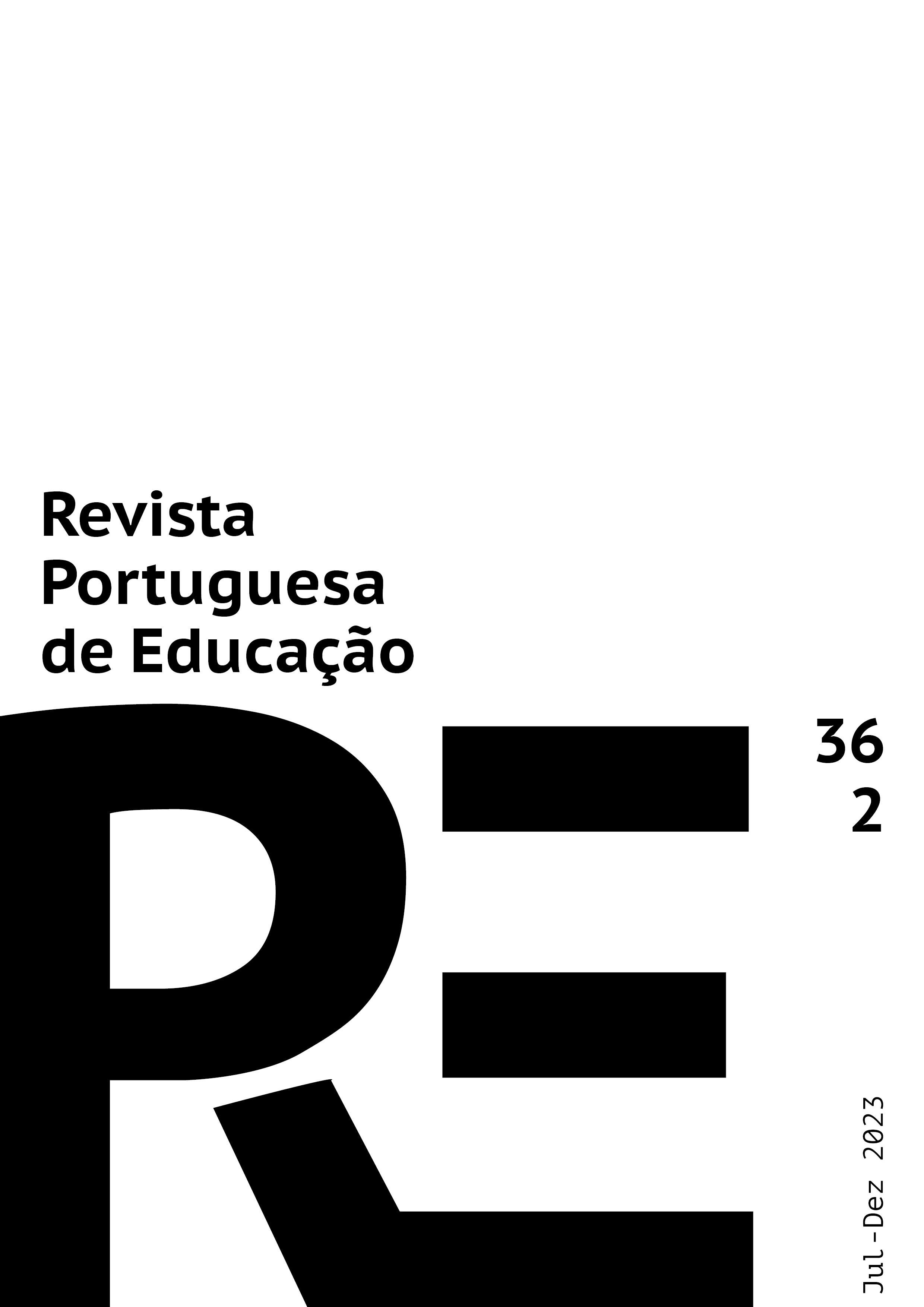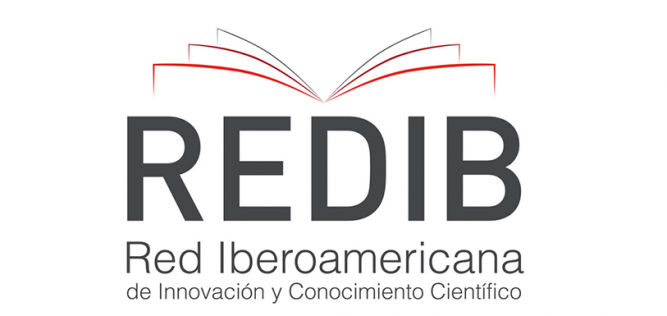Professores e telemóveis: Da utilização pessoal à integração na sala de aula
DOI:
https://doi.org/10.21814/rpe.26306Palavras-chave:
m-learning, Telemóveis, Educação, DocentesResumo
A escola, enquanto instituição estruturante da nossa sociedade, é influenciada pelas alterações que a própria sociedade experimenta e as quais a escola tem imperiosamente de acompanhar. A era tecnológica veio revolucionar os comportamentos da população, em particular das crianças e jovens, e dar espaço à era do m-learning, especificamente no que concerne ao uso dos telemóveis como uma ferramenta disponível para apoiar as aprendizagens. Por estes motivos, o desenvolvimento deste estudo objetivava identificar as funcionalidades dos telemóveis utilizadas pelos docentes portugueses e conhecer as suas perceções quanto à integração destes equipamentos em contextos formais de aprendizagem. A aplicação, análise e tratamento estatístico dos dados recolhidos, por meio de um questionário a 443 docentes do norte de Portugal, permitiram perceber que os docentes estão recetivos à integração dos telemóveis nas suas aulas, mas apontam várias barreiras como justificativa para os manter excluídos dessas dinâmicas. Nesta análise foi possível constatar que as ações que os docentes utilizam nos seus telemóveis são destinadas essencialmente para usos pessoais, não se registando um aproveitamento expressivo das suas potencialidades na vertente profissional. A destreza na utilização pessoal destes equipamentos por parte dos participantes no estudo revelou-se importante na forma como os docentes perspetivavam oportunidades de os incluir nas práticas profissionais.
Downloads
Referências
Andreassen, C. S. (2015). Online social network site addiction: A comprehensive review. Current Addiction Reports, 2, 175–184. https://doi.org/10.1007/s40429-015-0056-9
Asplund, S.-B., Olin-Scheller, C., & Tanner, M. (2018). Under the teacher´s radar: Literacy practices in task-related smartphone use in the connected classroom. Educational Studies in Language and Literature, 18, 1-26. https://doi.org/10.17239/L1ESLL-2018.18.01.03
Behera, S. (2013). M-Learning: A new learning paradigma. International Journal on New Trends in Education and Their Implications, 4(2), 24-34. http://www.ijonte.org/FileUpload/ks63207/File/03.behera.pdf
Brewer, E. W. (Ed.). (2009). Conducting survey research in education. In E-Learning Applications for Career and Technical Education (pp. 519-533). https://doi.org/10.4018/978-1-60566-739-3.ch041
Cardoso, G., Gomes, M. C., Espanha, R., & Araújo, V. (2007). Portugal móvel: Utilização do telemóvel e transformação da vida social. OberCom: Investigação e Saber em Comunicação. https://obercom.pt/wp-content/uploads/2016/06/Portugal-M%C3%B3vel-Utiliza%C3%A7%C3%A3o-do-Telem%C3%B3vel-e-Transforma%C3%A7%C3%A3o-da-Vida-Social-Fev2007.pdf
Carrega, J. (2011). A utilização do telemóvel em contexto educativo: Um estudo de caso sobre as representações de alunos e de professores do 9.º e 12.º anos de escolaridade. [Dissertação de Mestrado publicada]. Universidade Aberta. http://hdl.handle.net/10400.2/2043
Carvalho, L., & Ferreira, M. (2015). Mobile devices in school in teaching / learning process: The roadmap. In Proceedings of EDULEARN15 (pp. 4623-4634). IATED. https://library.iated.org/view/CARVALHO2015MOB
Chee, K., Yahaya, N., Ibrahim, N., & Noor Hassan, M. (2017). Review of mobile learning trends 2010-2015: A meta-analysis. Educational Technology & Society, 20(2), 113–126. https://www.jstor.org/stable/90002168
Cisco (2020). Cisco Annual Internet Report (2018–2023) White paper. https://www.cisco.com/c/en/us/solutions/collateral/executive-perspectives/annual-internet-report/white-paper-c11-741490.html
Corbeil, J., & Valdes-Corbeil, M. (2007). Are you ready for mobile learning?. Educause Quarterly, 30(2), 51-58. http://www.learntechlib.org/p/101389/
Cuban, L. (2001). Oversold and underused: Computers in the classroom. Harvard University Press.
Cuckle, P., Clarke, S., & Jenkins, I. (2000). Students' information and communications technology skills and their use during teacher training. Journal of Information Technology for Teacher Education, 9(1), 9-22.https://doi.org/10.1080/14759390000200072
Creswell, J. W., & Creswell, J. D. (2017). Research Design: Qualitative, Quantitative, and Mixed Methods Approaches (5.ª ed.). Sage Publishing.
Devi, R., & Saravanakumar, D. (2018). An Outlook on DigitaI Tools in Education. Curriculum and Instructional Designing for Global Education Conference. https://www.researchgate.net/publication/334362394_AN_OUTLOOK_ON_DIGITAL_TOOLS_IN_EDUCATION
Domingo, M., & Marqués, P. (2011). Classroom 2.0 Experiences and Building on the Use of ICT in Teaching. Scientific Journal of Media Literacy, 19(37), 169-175. https://doi.org/10.3916/C37-2011-03-09
Fathurrohman, M., Nindiasari, H., Anriani, N., & Pamungkas, A. S. (2021). Empowering mathematics teachers’ ICT readiness with android applications for Bring Your Own Devices (BYOD) practice in education. Cogent Education, 8(1), e 2002131. https://doi.org/10.1080/2331186X.2021.2002131
Firmansyah, R. O., Hamdani, R. A., & Kuswardhana, D. (2020). The use of smartphone on learning activities: Systematic review. OP Conf. Series: Materials Science and Engineering (pp.1-8). https://doi.org/10.1088/1757-899X/850/1/012006
Georgiev, T., Georgieva, E., & Smrikarov, A. (2004). M-learning: A new stage of e-learning. Paper presented at the International Conference on Computer Systems and Technologies - CompSysTech’2004, IV-28 (pp. 1-5). https://doi.org/10.1145/1050330.1050437
Grupo Marktest. (2022). Barómetro de Telecomunicações de 2018. https://www.marktest.com/wap/a/q/idtema~166/id~c9.aspx
Hartnell-Young, E., & Vetere, F. (2008). A Means of Personalising Learning: Incorporating Old and New Literacies in the Curriculum with Mobile Phones. Curriculum Journal, 19(4), 283-292. https://doi.org/10.1080/09585170802509872
Hiebl, R. W., & Richter, J. F. (2018). Response Rates in Management Accounting Survey Research. Journal of Management Accounting Research, 30(2), 59-79. https://doi.org/10.2308/jmar-52073
Holmberg, J. (2014). Studying the process of educational design – Revisiting school and making a case for reflective design-based research on teachers’ ‘Conversations with situations’. Technology Pedagogy and Education, 23(3), 293-310. https://doi.org/10.1080/1475939X.2014.942748.
Hung, J., & Zhang, K. (2012). Examining mobile learning trends 2003–2008: A categorical meta-trend analysis using text mining techniques. Journal of Computing in Higher Education, 24, 1–17. https://doi.org/10.1007/s12528-011-9044-9
Kang, B. (2021). How the COVID-19 pandemic is reshaping the education servisse. The Future of Service Post-COVID-19 Pandemic, 1, 15-36. https://doi.org/10.1007/978-981-33-4126-5_2
Kirkland, K., & Sutch, D. (2009). Overcoming the barriers to educational innovation: A literature review. Futurelab. https://www.nfer.ac.uk/publications/futl61/futl61.pdf
Kukulska-Hulme, A. (2007). Mobile usability in educational contexts: What have we learnt? International Review of Research in Open and Distance Learning, 8(2), 1-16. https://doi.org/10.19173/irrodl.v8i2.356
Lee, K., Suh, E., & Park, J. (2012). A study on determinant factors to purchase for tablet PC and smartphone by a comparative analysis. Pohang University of Science and Technology.
Lepp, J., Barkley, A., & Karpinski, C. (2014). The relationship between cell phone use, academic performance, anxiety, and satisfaction with life in college students. Computers in Human Behavior, 31, 343-350.https://doi.org/10.1016/j.chb.2013.10.049
Lima, F. (2019). Telemóveis: Proibir, Obrigar Ou Admitir? In, Telemóvel na sala de aula: sim ou não? (pp. 16-17). EDULOG – Fundação Belmiro de Azevedo. https://www.edulog.pt/storage/app/uploads/public/5c8/66d/bdb/5c866dbdbd2f2076183135.pdf
Lobo, A. (2019). Contextualização. In, Telemóvel na sala de aula: sim ou não? (pp. 6-11). EDULOG – Fundação Belmiro de Azevedo. https://www.edulog.pt/storage/app/uploads/public/5c8/66d/bdb/5c866dbdbd2f2076183135.pdf
Lucas, M., & Moreira, A. (2018). DigCompEdu: Quadro europeu de competência digital para educadores. Universidade de Aveiro. http://hdl.handle.net/10773/24983
Maia-Lima, C., Silva, A., Pinto, A., & Barbot, A. (2016). Smartphones in the classroom: two didatics experiences [Comunicação em conferência]. In 9th annual International Conference of Education, Research and Innovation, Seville, Spain, 14-16 november of 2016 (pp. 2153-2160). https://doi.org/10.21125/iceri.2016.1484
Moura, A. (2010). Apropriação do telemóvel como ferramenta de mediação em mobile learning: Estudos de caso em contexto educativo. [Tese de doutoramento publicada]. Universidade do Minho. https://hdl.handle.net/1822/13183
O'Bannon, B., & Thomas, K. (2015). Mobile phones in the classroom: Preservice teachers answer the call. Computers & Education, 85, 110-123. https://doi.org/10.1016/j.compedu.2015.02.010
Pedro, L., Santos, C., Aresta, M., & Almeida, S. (2015) Peer-supported badge attribution in a collaborative learning platform: The SAPO Campus case. Computers in Human Behavior, 51, 562–567. https://doi.org/10.1016/j.chb.2015.03.024
Santos, R. (2018). A utilização do telemóvel em sala de aula na disciplina de economia no ensino profissional. [Dissertação de Mestrado publicada]. Universidade de Lisboa. http://hdl.handle.net/10451/36380
Siebert, M. (2019). The Silent classroom: The Impact of smartphones and a social studies teacher's response. The Social Studies, 110(3), 122-130. https://doi.org/10.1080/00377996.2019.1580666
Spitzer, M. (2015). M-learning? When it comes to learning, smartphones are a liability, not an asset. Trends in Neuroscience and Education, 4(4), 87-91. https://doi.org/10.1016/j.tine.2015.11.004
Sung, Y., Chang, K., & Liu, T. (2016). The effects of integrating mobile devices with teaching and learning on students' learning performance: A meta-analysis and research synthesis. Computers & Education, 94, 252–275. https://doi.org/10.1016/j.compedu.2015.11.008
Thomas, K. M., O’Bannon, B. W., & Britt, V. G. (2014). Standing in the Schoolhouse Door: Teacher Perceptions of Mobile Phones in the Classroom. Journal of Research on Technology in Education, 46(4), 373-395. https://doi.org/10.1080/15391523.2014.925686
Traxler, J. (2009). Current state of mobile learning. In M. Ally (Ed.), Mobile learning: Transforming the delivery of education and training (pp. 9–24). Athabasca University Press. https://doi.org/10.15215/aupress/9781897425435.01
Vázquez-Cano, E. (2014). Mobile distance learning with Smartphones and apps in higher education. Educational Sciences: Theory & Practice, 14(4), 1505–1520. https://files.eric.ed.gov/fulltext/EJ1045122.pdf
Vygotsky, L. (1998). Linguagem, desenvolvimento e aprendizagem. Ícone Editora. https://www.unifal-mg.edu.br/humanizacao/wp-content/uploads/sites/14/2017/04/VIGOTSKI-Lev-Semenovitch-Linguagem-Desenvolvimento-e-Aprendizagem.pdf
Wallis, C. (2010). The impact of media multitasking on children's learning and development: Report from a research seminar. The Joan Ganz Cooney Center at Sesame Workshop. https://joanganzcooneycenter.org/wp-content/uploads/2010/03/mediamultitaskingfinal_030510.pdf
Wood, E., Zivcakova, L., Gentile, P., Archer, K., De Pasquale, D., & Nosko, A. (2012). Examining the impact of off-task multi-tasking with technology on real-time classroom learning. Computers & Education, 58(1), 365–374. https://doi.org/10.1016/j.compedu.2011.08.029
Downloads
Publicado
Como Citar
Edição
Secção
Licença
Direitos de Autor (c) 2023 Alexandre Pinto, Ângela Couto, António Barbot, Cláudia Manuela Maia Lima, Sara Aboim, Rui Teles

Este trabalho encontra-se publicado com a Licença Internacional Creative Commons Atribuição-CompartilhaIgual 4.0.
1. Autores conservam os direitos de autor e concedem à revista o direito de primeira publicação, com o trabalho simultaneamente licenciado sob a Licença Creative Commons Attribution 4.0 CC-BY-SA que permite a partilha do trabalho com reconhecimento da autoria e publicação inicial nesta revista;
2. Autores e autoras têm autorização para assumir contratos adicionais separadamente para distribuição não-exclusiva da versão do trabalho publicada nesta revista (ex.: depositar em repositório institucional ou como capítulo de livro), com reconhecimento de autoria e publicação inicial nesta revista;
3. Autores e autoras têm permissão e são estimulado/as a publicar e distribuir o seu trabalho online (ex.: em repositórios institucionais ou na sua página pessoal), já que isso pode aumentar o impacto e a citação do trabalho publicado (Veja O Efeito do Acesso Livre).
Esta obra está licenciada sob uma Licença Creative Commons - Atribuição Compartilhamento pela mesma Licença Internacional 4.0




















